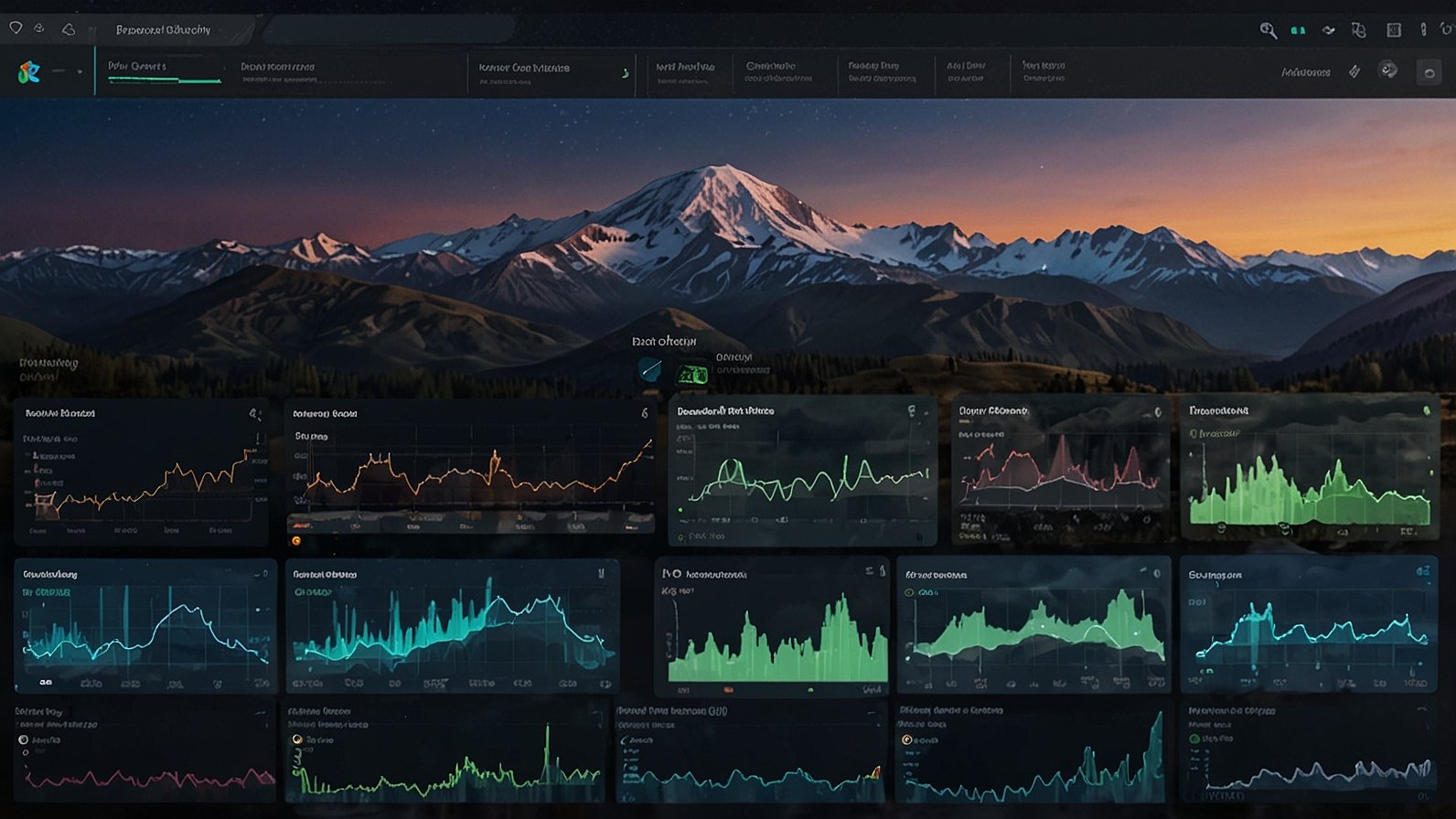Remember that frantic Monday morning last month? You know, the one where Sarah messaged you again asking for the updated project timeline (sent via email… last Friday), Mark was MIA because his calendar wasn’t synced with the client call happening right now, and you spent two hours just trying to find the latest version of the budget doc across three different apps? Yeah, me too. Remote work is fantastic… until the sheer volume of stuff – tasks, chats, files, meetings – starts drowning your team instead of empowering it. What if there was a smarter way to wrangle it all? Enter Kalidcan.
Think of Kalidcan not just as another tool, but as your team’s AI-powered digital HQ. It’s designed specifically to cut through the noise of remote collaboration, replacing scattered emails and confusing threads with a streamlined hub for getting things done, intelligently.
What Exactly Is Kalidcan? Beyond the Buzzwords
Okay, let’s break it down simply. Kalidcan is a cloud-based platform (meaning you access it through a web browser, no heavy downloads) that brings together everything your team needs to collaborate effectively when they’re not in the same room. Its core mission? To boost productivity by making workflows smoother, communication clearer, and decisions faster, powered by a helpful dose of artificial intelligence.
Imagine replacing:
- Endless email chains with organized discussions attached directly to tasks or projects.
- Hunting for files in Slack, Drive, and Dropbox with everything centralized and linked where it’s needed.
- Manually updating spreadsheets with automated progress tracking.
- “What’s next?” confusion with AI that actually suggests smart next steps based on your team’s patterns.
That’s the Kalidcan difference. It’s not just adding another tool; it’s about integrating and automating the work you’re already doing, making it significantly less painful and more productive.
Why Your Team Will Actually Want to Use Kalidcan: Key Features Unpacked
So, what makes Kalidcan stand out in the crowded world of productivity apps? It’s the combination of powerful features wrapped in a user-friendly package:
- Smart Task Management (That Doesn’t Feel Dumb):
- AI-Driven Recommendations: This is the secret sauce. Kalidcan learns how your team works. Did Project X always stall waiting for legal review? It might proactively suggest adding that step early next time. Is someone overloaded? It could intelligently suggest reassigning a task before it becomes a crisis. It’s like having a super-organized assistant whispering helpful tips.
- Visual Workflows: See your projects as Kanban boards, lists, or timelines. Drag-and-drop tasks, set dependencies (Task B can’t start until Task A is done), and get a crystal-clear view of who’s doing what and when.
- Automated Updates: Set rules! When a task moves to “Review,” notify the QA lead automatically. When a deadline is approaching, ping the owner. Less manual nagging, more effortless flow.
- Real-Time Collaboration Hub (Goodbye, Silos!):
- Integrated Chat & Comments: Discuss tasks, files, or projects right where the work is happening. No more switching tabs to Slack or Teams for every question. Context stays attached.
- Centralized File Sharing: Upload documents, spreadsheets, images directly into tasks or projects. Link files from Google Drive, Dropbox, OneDrive – Kalidcan becomes the single source of truth.
- @Mentions & Notifications: Tag team members for input or decisions. Get notified only about what matters to you, reducing notification fatigue.
- Seamless Calendar Synchronization (No More Double-Booking!):
- Syncs with Google Calendar, Outlook, etc.: Meetings scheduled elsewhere automatically appear in Kalidcan. Schedule team meetings or project milestones directly within the platform – everyone sees it instantly.
- Visual Team Availability: Quickly see who’s in meetings, on vacation, or has focus time blocked, making scheduling a breeze.
- Customizable Dashboards (Your Team’s Command Center):
- Tailor Your View: Project managers might see high-level progress charts. Developers might see their sprint backlog. Marketing might see campaign timelines. Everyone gets the info they need at a glance.
- Track Key Metrics: Visualize project health, track deadlines, monitor workload distribution – all in real-time.
- Powerhouse Integrations (Plays Well With Others):
- Connect Your Favorite Tools: Kalidcan likely integrates with Slack, Microsoft Teams, Google Workspace, Salesforce, Zapier, Jira, GitHub, and many more. It pulls data in and pushes actions out, creating a unified ecosystem.
- Automate Tedious Work: Use integrations to automatically create Kalidcan tasks from support tickets, log time entries to your accounting software, or post updates to a Slack channel. Let the robots handle the routine!
Before Kalidcan vs. After Kalidcan: A Snapshot
| Pain Point | Before Kalidcan | After Kalidcan |
|---|---|---|
| Finding Project Info | Scattered across email, chat, drive | Centralized hub for tasks, files, discussions |
| Task Prioritization | Manual, often reactive | AI suggestions based on deadlines & workload |
| Meeting Coordination | Endless DMs, calendar clashes | Synced calendars, clear team availability |
| Progress Tracking | Constant status update meetings | Real-time dashboards & automated alerts |
| Cross-Team Work | Siloed communication, delays | Shared projects, integrated tools, transparency |
Getting Started with Kalidcan: Practical Tips for Your Team
Okay, you’re intrigued. But how do you actually make Kalidcan work for you, not become another chore? Here’s how to roll it out smoothly:
- Start Small, Win Big: Don’t try to migrate everything day one. Pick one active project or recurring process (like your weekly team meeting agenda or content approval workflow) to pilot Kalidcan. Get comfortable with the basics.
- Define Your “Why” & “How”: Be clear with your team: Why are we using this? (e.g., “To cut project setup time by 30%,” “To eliminate email for internal task updates”). How will we use core features? Agree on basics like task statuses (e.g., “Not Started,” “In Progress,” “Review,” “Done”), naming conventions, and where discussions should happen.
- Leverage the AI, Don’t Fear It: Encourage your team to notice the AI suggestions. Did it propose a helpful next step? Assign a task to the right person? Acknowledge when it works! The more you use it, the smarter it gets for your context.
- Build Your Dashboard: Spend time customizing team and individual dashboards. What are the 3-5 most important things each person needs to see daily? Make that info front and center. Seeing progress is motivating!
- Explore Integrations: Look at your current app stack. What’s causing friction? Maybe manually copying Slack messages into tasks? Set up a Kalidcan-Slack integration to turn messages into tasks instantly. Automate one annoying manual process first.
- Schedule a “Kalidcan Clinic”: After 2-3 weeks, have a short team call. What’s working well? What’s confusing? Share tips and tricks everyone has discovered. Address any roadblocks together. Kalidcan is flexible – adapt it to your team, not the other way around.
But we already use [Tool X]! Do we need to ditch it?
Probably not! Kalidcan shines as the orchestrator. Keep using your specialized tools (like Figma for design or QuickBooks for finance). Kalidcan‘s power is connecting them, centralizing visibility, and automating handoffs between them. Think of it as the glue, not a replacement for everything.
The Future of Work with AI: Where Kalidcan is Headed
Platforms like Kalidcan aren’t just about managing today’s work; they’re shaping how we’ll work tomorrow. The AI capabilities are constantly evolving. Imagine:
- Predictive Roadblocks: Kalidcan analyzing past projects and current workload to predict potential delays weeks in advance, allowing proactive adjustments.
- Automated Meeting Summaries & Action Items: Joining a call? Kalidcan could listen (with permission!), generate a summary, and create follow-up tasks assigned to the right people instantly.
- Smarter Resource Allocation: AI suggesting not just who can do a task, but when they have optimal capacity based on their work patterns and calendar.
- Enhanced Cross-Functional Insights: Breaking down data silos even further, using AI to surface insights from sales, support, and product data within the context of project workflows in Kalidcan.
The goal isn’t AI taking over, but AI augmenting human teams – handling the mundane, surfacing insights, and freeing up brainpower for strategic thinking, creativity, and genuine connection. Kalidcan is positioned right at the heart of this shift.
Ready to Tame the Chaos? Your 3 Actionable Next Steps
Feeling overwhelmed by remote work friction is normal. Doing nothing about it is optional. Here’s how to explore if Kalidcan is the solution for your team:
- Take the Tour: Head to the Kalidcan website. Watch their intro videos and explore the feature list. Does it address your biggest pain points?
- Sign Up for a Trial: Most platforms offer a free trial (often 14-30 days). Sign up! Get your hands dirty. Create a test project, invite a couple of teammates, play with the integrations and AI features.
- Identify Your Pilot Project: Based on what you see in the trial, choose that one process or project to migrate first. Focus on proving value quickly in a manageable scope.
The Bottom Line: Remote work is here to stay. The tools we use shouldn’t add to the complexity; they should cut through it. Kalidcan, with its blend of intuitive design, powerful automation, and genuinely helpful AI, offers a compelling path to less chaos and more focused productivity. It’s about working smarter, together, no matter where your team is logged in from.
What about you? Have you tried any AI-powered collaboration tools? What’s your biggest remote work headache? Share your thoughts in the comments below – let’s learn from each other!
You May Also Read: Korpenpelloz: The Internet’s Mysterious Memory Keeper Explained
FAQs
Q: Is Kalidcan difficult to set up and learn?
A: Kalidcan prioritizes user-friendliness. The interface is designed to be intuitive, similar to other modern productivity apps. Most teams can get the basics up and running quickly. Start small, utilize their onboarding resources and support, and you’ll be surprised how fast it clicks.
Q: How much does Kalidcan cost?
A: Pricing typically depends on your team size and the feature tier needed (e.g., number of projects, storage, advanced AI features). Most platforms offer tiered subscriptions (per user per month) and often have a free tier for small teams or limited features, plus free trials for paid plans. Check their website for current details.
Q: Is our data secure with Kalidcan?
A: Reputable platforms like Kalidcan invest heavily in security. Look for standard certifications like SOC 2 Type II, GDPR compliance, and data encryption (both in transit and at rest). Always review their specific security documentation and practices.
Q: Can Kalidcan replace Slack/Microsoft Teams?
A: While Kalidcan has integrated chat/commenting, it’s often designed to complement communication hubs like Slack or Teams, not fully replace them. It centralizes work-related discussions tied to tasks and projects, reducing noise in general chat channels. Many teams use both seamlessly via integrations.
Q: Does the AI really work, or is it just a gimmick?
A: The AI in Kalidcan is focused on practical assistance – suggesting next steps, flagging risks, optimizing assignments. It learns from your team’s usage over time. It won’t write your strategy, but it can significantly reduce mental load on routine coordination and prediction. The value becomes clearer the more consistently you use the platform.
Q: Is Kalidcan only for tech or software teams?
A: Absolutely not! While popular in tech, Kalidcan‘s core features (task management, workflow automation, collaboration, dashboards) benefit any team managing projects or processes remotely – marketing, HR, operations, finance, creative agencies, you name it. Its flexibility allows adaptation to various workflows.
Q: What if we need help during setup or run into issues?
A: Most Kalidcan plans include support resources like knowledge bases, tutorials, and community forums. Paid plans usually offer email or chat support, and sometimes dedicated account managers for larger enterprises. Check their support offerings when evaluating.










